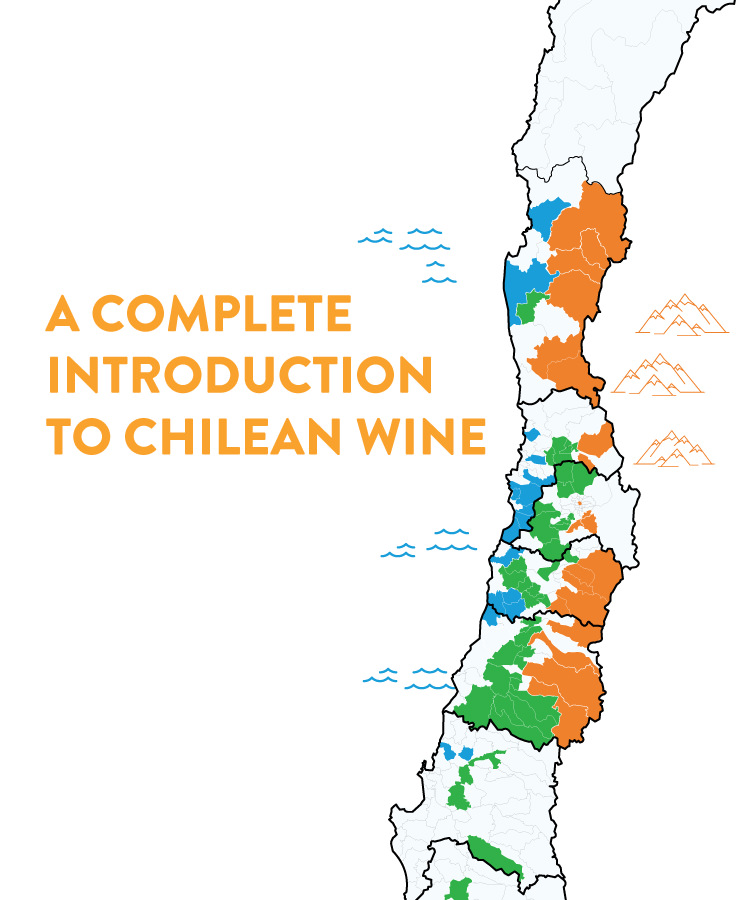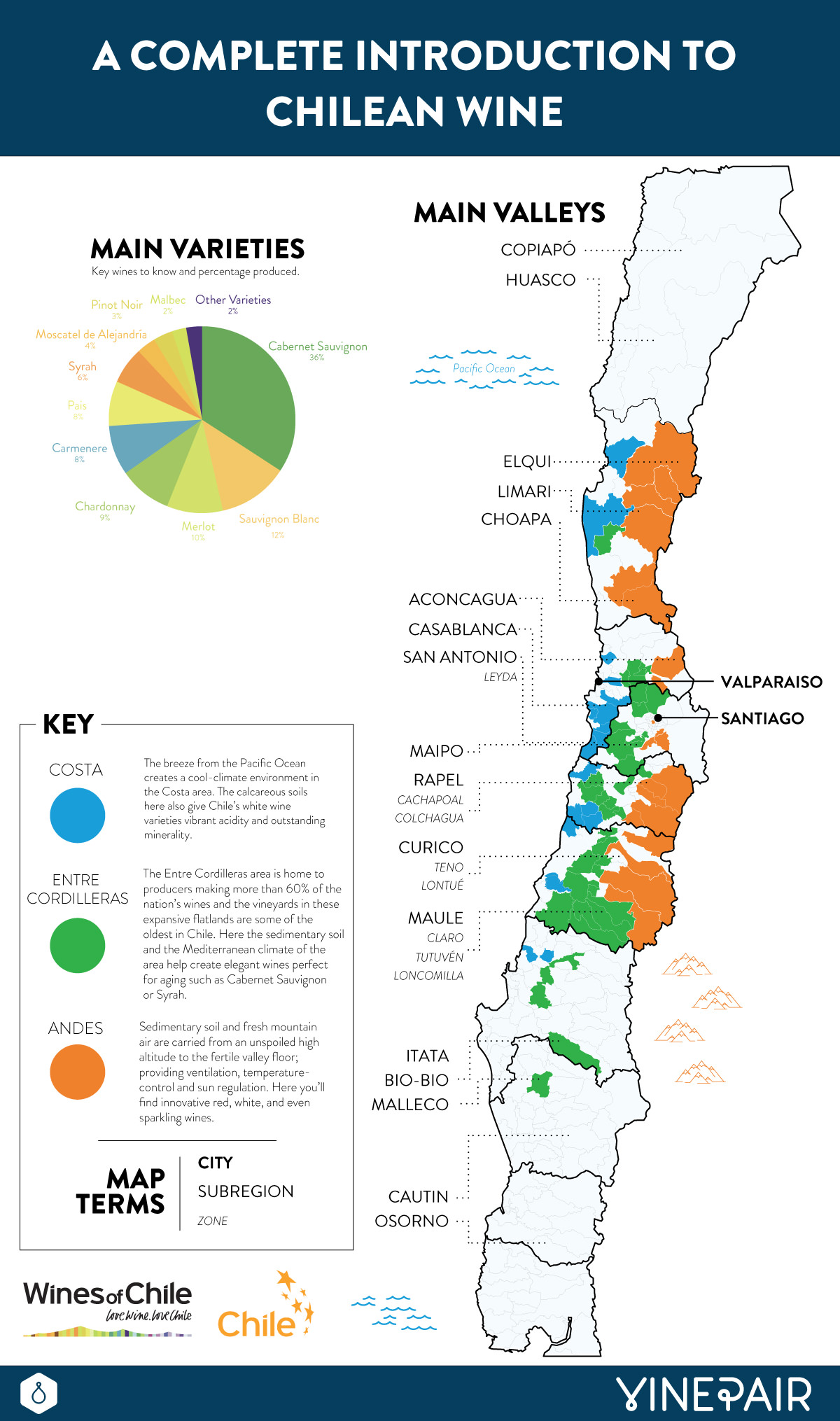
Chile is one of the most unique countries in the world for making wine thanks to the diversity of its geography. Its sprawling coastline, rolling plains, mountainous regions, and glaciers that border its southern tip make Chile one of the most interesting places to make red, white, rosé, and even sparkling wine in the world.
Chile’s unique features create a climate that is similar in nature to a Mediterranean island, such as the Humboldt Current that cools down the coastline, or the Andes Mountains that provide ventilation and control cloud formation. These factors bring to life some standout wines we all know and love, such as Cabernet Sauvignon, Chardonnay, Sauvignon Blanc, and Carmenère.
These wines punch way above their weight class, easily competing with and besting famous New and Old World regions at a fraction of the price.
Chile uses a Denomination of Origin (D.O.) system to designate specific regions throughout the country. These main viticultural regions (Central Valley, for example) are broken down into subregions (such as the Rapel Valley), and then can be defined further by a zone (like the Colchagua Valley). These subregions or zones are often marked on the label, providing a snapshot of the wine’s terroir.
In addition to the D.O. system, Chile also classifies its wine by highlighting the type of terrain the grapes are grown in. These three designations, Costa (coastal), Entre Cordilleras (mid-mountain range), and Andes (Andes mountains) each complement the D.O. system by providing more information on elevation and atmospheric tendencies of the areas, and are indicators of quality. Learn more about Chilean wine in the map below.
This article is sponsored by Wines of Chile. Taste the unexpected.

